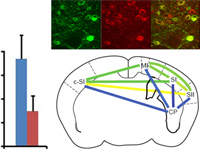Hippocampal CA1 neurons generate single spikes and stereotyped bursts of spikes. However, it is unclear how individual neurons dynamically switch between these output modes and whether these two spiking outputs relay distinct information. We performed extracellular recordings in spatially navigating rats and cellular voltage imaging and optogenetics in awake mice. We found that spike bursts are preferentially linked to cellular and network theta rhythms (3-12 Hz) and encode an animal’s position via theta phase precession, particularly as animals are entering a place field. In contrast, single spikes exhibit additional coupling to gamma rhythms (30-100 Hz), particularly as animals leave a place field. Biophysical modeling suggests that intracellular properties alone are sufficient to explain the observed input frequency-dependent spike coding. Thus, hippocampal neurons regulate the generation of bursts and single spikes according to frequency-specific network and intracellular dynamics, suggesting that these spiking modes perform distinct computations to support spatial behavior.
